The Sandy Bridge Review: Intel Core i7-2600K, i5-2500K and Core i3-2100 Tested
by Anand Lal Shimpi on January 3, 2011 12:01 AM ESTThe 6-series Platform
At launch Intel is offering two chipset families for Sandy Bridge: P-series and H-series, just like with Lynnfield. The high level differentiation is easy to understand: P-series doesn’t support processor graphics, H-series does.
There are other differences as well. The P67 chipset supports 2x8 CrossFire and SLI while H67 only supports a single x16 slot off of the SNB CPU (the chip has 16 PCIe 2.0 lanes that stem from it).
While H67 allows for memory and graphics overclocking, it doesn’t support any amount of processor overclocking. If you want to overclock your Sandy Bridge, you need a P67 motherboard.
6Gbps
Had SSDs not arrived when they did, I wouldn’t have cared about faster SATA speeds. That’s how it worked after all in the evolution of the hard drive. We’d get a faster ATA or SATA protocol, and nothing would really change. Sure we’d eventually get a drive that could take advantage of more bandwidth, but it was a sluggish evolution that just wasn’t exciting.
SSDs definitely changed all of that. Today there’s only a single 6Gbps consumer SSD on the market—Crucial’s RealSSD C300. By the middle of the year we’ll have at least two more high-end offerings, including SandForce’s SF-2000. All of these SSDs will be able to fully saturate a 3Gbps SATA interface in real world scenarios.
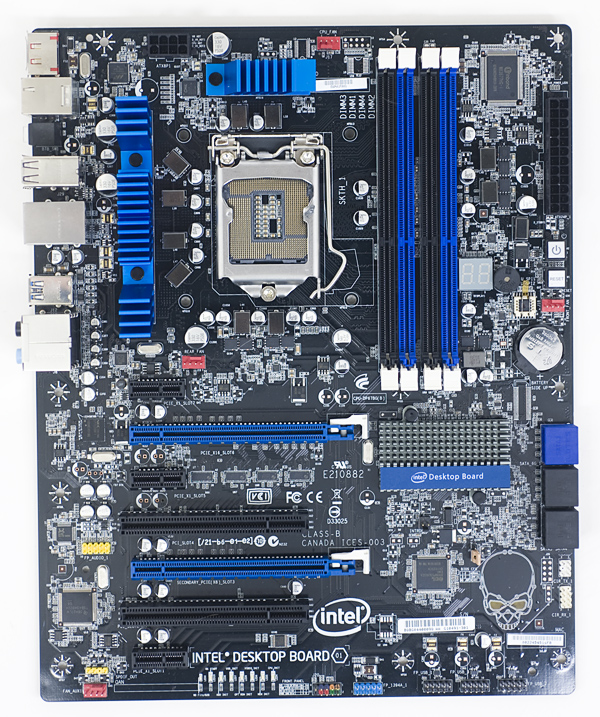
Intel's DP67BG—The blue SATA ports on the right are 6Gbps, the black ones are 3Gbps
To meet the soon to be growing need for 6Gbps SATA ports Intel outfits the 6-series PCH with two 6Gbps SATA ports in addition to its four 3Gbps SATA ports.
I dusted off my 128GB RealSSD C300 and ran it through a bunch of tests on five different platforms: Intel’s X58 (3Gbps), Intel’s P67 (3Gbps and 6Gbps), AMD’s 890GX (6Gbps) and Intel’s X58 with a Marvell 9128 6Gbps SATA controller. The Marvell 91xx controller is what you’ll find on most 5-series motherboards with 6Gbps SATA support.
I ran sequential read/write and random read/write tests, at a queue depth of 32 to really stress the limits of each chipset’s SATA protocol implementation. I ran the sequential tests for a minute straight and the random tests for three minutes. I tested a multitude of block sizes ranging from 512-bytes all the way up to 32KB. All transfers were 4KB aligned to simulate access in a modern OS. Each benchmark started at LBA 0 and was allowed to use the entire LBA space for accesses. The SSD was TRIMed between runs involving writes.
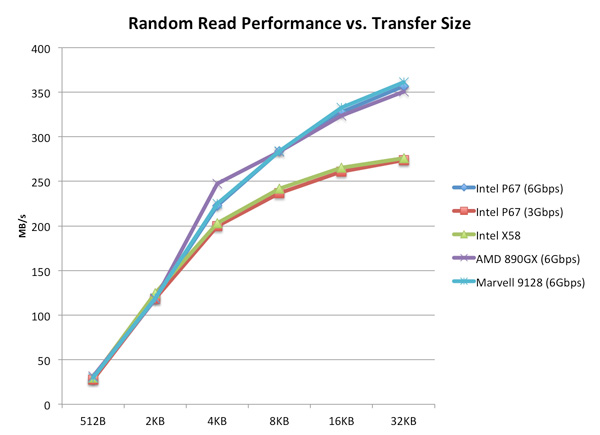
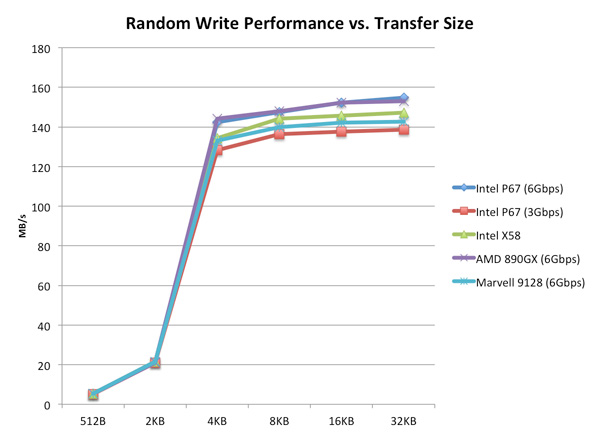
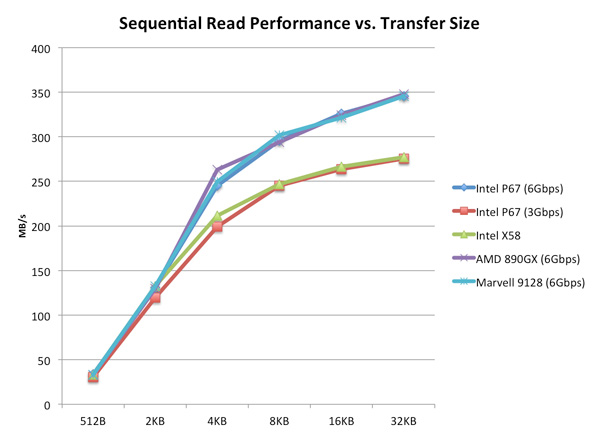
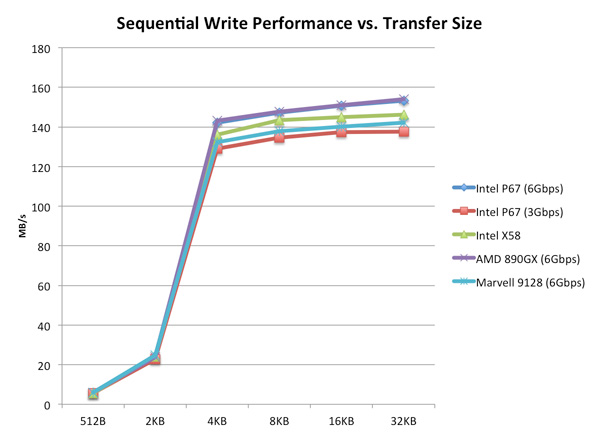
Among Intel chipsets I found that the X58 has stellar 3Gbps SATA performance, which is why I standardize on it for my SSD testbed. Even compared to the new 6-series platform there are slight advantages at high queue depths to the X58 vs. Intel’s latest chipsets.
Looking at 6Gbps performance though there’s no comparison, the X58 is dated in this respect. Thankfully all of the contenders do well in our 6Gbps tests. AMD’s 8-series platform is a bit faster at certain block sizes but for the most part it, Intel’s 6-series and Marvell’s 91xx controllers perform identically.
I hate to be a bore but when it comes to SATA controllers an uneventful experience is probably the best you can hope for.


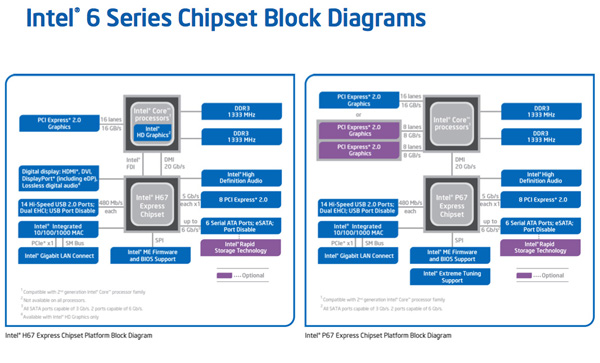








283 Comments
View All Comments
krazyderek - Monday, January 3, 2011 - link
putting the 3000 on the the 2600k and 2500k parts ALMOST made sense as an up-sell, but you can't even use their IGP when on a P series board when you're overclocking! If the Z series wont' be out for a while why the hell would i buy an overclocking chip now? so i can spend more money to replace my H series motherboard with a Z series? Nice try.It's frustrating that you have to pick your sacrifice.... you either get the 3000 with the K sku, or you get VT-d and TXT with the standard sku. Intel doesn't have an offering with both which is kind of ridiculous for high end chips.
mino - Wednesday, January 5, 2011 - link
Yeah, what is most disappointing is lack of Virtualization support even from i3's (!)For christ's sake, Virtualization is the most BASIC requirement for any box today and even s775 Pentium, not to mention the WHOLE AMD lineup have it!
For me this means nothing sub-i5 is useable in ANY capacity, business or private while i5 are (financially) and overkill for most uses.
Well done Intel. You have just lost ~100 $100 certain sales this year. Whatever, will have to wait for Llano for the mainstream stuff.
DrSlothy - Wednesday, January 12, 2011 - link
I think that's an error in the review table, though one I've seen in every Core review so far - did Intel marketing give out wrong specs?Intel website shows the entire Sandy Bridge line-up to have Hardware Virtualisation (VT-x) support, though some are missing VT-d
tech6 - Monday, January 3, 2011 - link
Another great review from Anandtech - thanks guys.It seems odd that the 3000 series graphics engine would be only included on a part designed for over clocking and the boards that support overclocking can't handle integrated graphics. I would have thought that the other way around would have made more sense.
In any case the 2600K and 2500K look like great value parts and are just what I was waiting for!
DanNeely - Monday, January 3, 2011 - link
Does anyone know if QuickSync will appear on LGA-2011 chips? I know they aren't going to have the general purpose GPU components, but this is enough of a performance booster that I'd think Intel would want to keep it on their high end consumer platform in some fashion.ThaHeretic - Monday, January 3, 2011 - link
I see TXT in the last chart above with no explanation as to what it is or why it is differentiated. They -took out- functionality from the unlocked parts? That seems backwards...Kevin G - Monday, January 3, 2011 - link
This functionality will likely appear in Sandybridge Xeons for socket 1155. Intel *generally* segments the Xeons by core count and clock speed, not by feature set like they do for consumer chips. The other feature Intel is holding back is ECC which should be standard in socket 1155 Xeons.DanNeely - Monday, January 3, 2011 - link
It's a hardware security feature. It's best known for the Trusted Platform Module; an on board cryptographic device used in some corporate computers but not used in consumer systems. Probably they just want to keep people from building high end secure servers with cheap, overclocked K parts instead of the much more profitable XEONs for 2-3x as much.http://en.wikipedia.org/wiki/Trusted_Execution_Tec...
kache - Monday, January 3, 2011 - link
I think I'll wait for the SB xeons and the new EVGA SR-2, hoping that EVGA will release it.adrien - Monday, January 3, 2011 - link
Numbers will probably speak by themselves. ;-)17:37 ~ % md5sum *.png
bee3c83b3ef49504e0608a601a03bfc2 6870.png
bee3c83b3ef49504e0608a601a03bfc2 snb.png
So the 6870 and cpu-rendering have the same image.